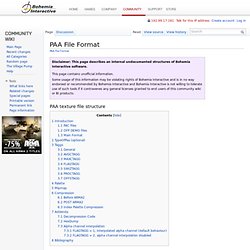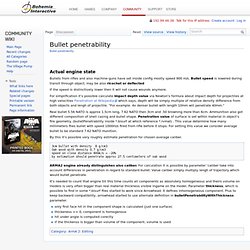

Mod Restoring & ReTexturing. ====== Normal Maps ====== ====== Overview ====== **Normal Mapping** Say goodbye to dull surfaces with 3D World's high-speed tour of the games industry’s hottest new technique If you aim to work in games, it’s worth playing around with normal mapping.

Now one of the industry’s hottest topics, normal maps make the surface of a game model look much more detailed and impressive. At present, a common approach is to build the hi-res source model immediately, but I feel it can be more effective to start with the lo-res final model. ====== ArmA guys ====== Panda[PL] on BIS forums: IIRC one of devs once said how specular texture should look like:\\ Red = diffuse\\ Green = specular\\ Blue = specular power.\\ So if you don't intend to change specular power and diffuse then both R and B should be both set to full. Panda[PL]: The problem with specular map is: it needs two channels to work! Another way would be making a hipoly version and using the program to make the normal map by comparing them.
Oxygen 2 - Manual. From BISim Wiki Basic setup External Viewer: C:\program files\bohemia interactive\arma\ArmA.exe -window -buldozer -noland DLL Folder - path to O2 installation Path for textures - path to work disk (usually P:\) Source Safe Database - login to Microsoft Visual Studio Source Safe database Terminology Point – individual point in space Vertex – point of intersection of two or more edges Edge - connection between two vertices Polygon – planar surface with any number of edges Triangle – polygon with three edges.

Tutorials. Main Page. Categories. Camera.sqs. It won't take you long to discover that the original Operation Flashpoint camera options which are found in the editor don't give you the same versatility that you have seen in the official missions or quality user-created cutscenes.

The "editor driven cutscene" has long been frowned upon by serious mission makers and for good reason. Seeing the same spinning camera shot and slow zooms over and over make the editor driven cutscene instantly recognisable as novice and that's without mentioning the annoying split second delay before the cutscene gets going. Thankfully BI accounted for this by having its own method of creating camera cutscenes bypassing the editor options altogether. It is a script which simulates a real camera, which literally lets you point and click your angles, thus allowing you to create cutscenes with minimum fuss. This script already exists within Flashpoint. Usage To execute the script create an object - doesn't need to be a soldier - and in its init field type Notes. PAA File Format. PAA texture file structure Introduction Of the many image file formats 'out there', such as jpeg, such as gif.

BI choose to use a specially developed file format (paa) as the base texture file for all engine types. The reason for this is the raw data within the file can be passed directly to Microsoft's Direct X as a DXT1 picture (eg) without further massaging. While all engines except Elite also support JPG files, PAA files can result in much better performance. PAC files .pac files are (almost) synonomous with .paa. The distinction does not exist. Note however that Arma2's tgaviewer *cannot* read a palete index .paa extension. only .pac extensions.
OFP DEMO files The initial 'proof of concept' for ofp released in 1997, was a demonstration of an island with models and textures. These pac/paa files can still be read by tgaviewer! The *only* difference between these, and subsequent pax files is that the index pallet appears at beginning of file. There is NO header type, There are NO taggs Taggs. Bullet penetrability. Actual engine state Bullets from rifles and also machine-guns have set inside config mostly speed 900 m/s.

Bullet speed is lowered during transit through object, may be also ricochet or deflected If the speed is distinctively lower then it will not cause wounds anymore. For simplification it's possible calculate impact depth value via Newton's formula about impact depth for projectiles at high velocities Penetration at Wikipedia which says, depth will be simply multiple of relative density difference from both objects and lengh of projectile.
"For example. 4x denser bullet with length 10mm will penetrate 40mm. " Real bullet 5.56 NATO is approx 1.5cm long, 7.62 NATO then 3cm and .50 browning more than 6cm. By this it's possible very roughly estimate penetration for chosen average caliber. RVMAT basics. Theory Lighting Lighting and shading is what makes 3D scene appealing.

In real-time render we still have to simplify so Artist must understand how shading works in engine to be able prepare the best realistic looking surfaces. ARMA engine counts lighting as T * (D.o + A) + S.o T = texture color D = diffuse lighting (color, intensity and direction. A = ambient lighting (color and intensity. S = specular (setting of material glossiness and specularity) o = direction of light (1= pixel is lit, 0= pixel is in shadow) Simple materials count lighting per vertex by interpolating light direction between face edges (normals).
Material templates.